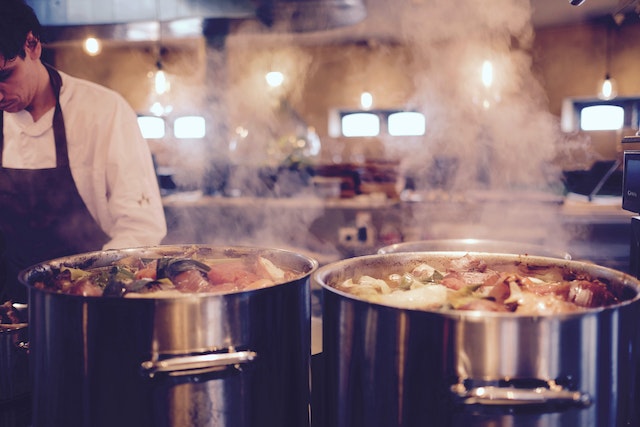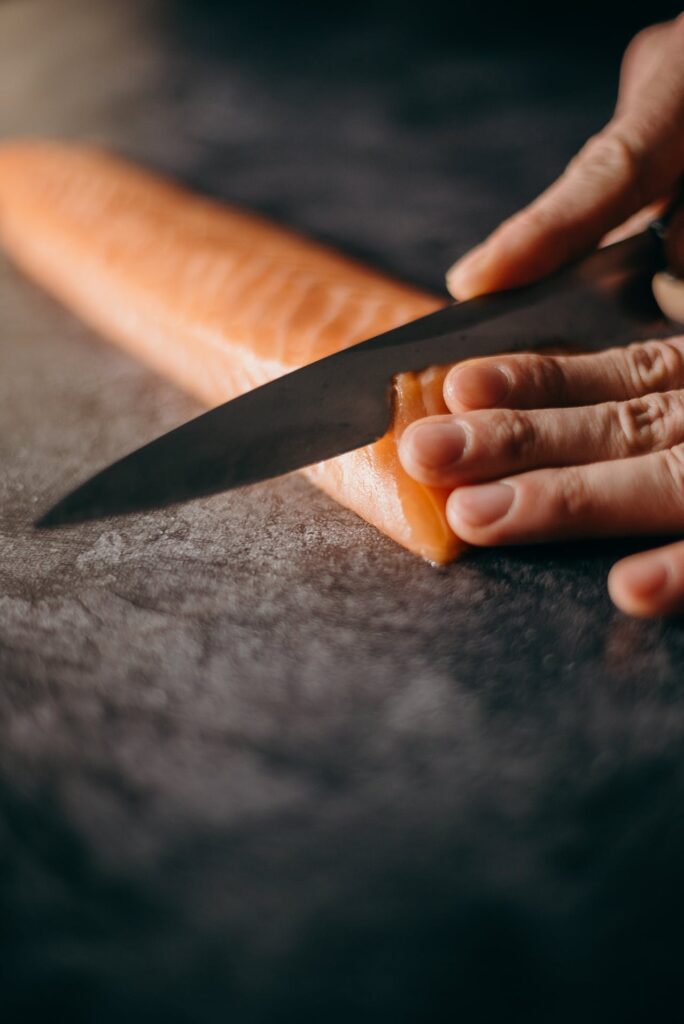
21, Nov 2023
How To Clean Salmon Before Cooking
If you writeto clean salmon before cooking, you are landing at the right place. I hope you will enjoy it.
Salmon, a delectable and nourishing fish, is esteemed among seafood enthusiasts due to its irresistible taste and numerous health benefits. Before cooking salmon, it’s crucial to ensure it is properly cleato maintains flavostilli GSTStil right techniquesbut with the right techniques, you can easily prepare it for a delectable culinary experience. In this article, we will walk you through a step-by-step guide on how to clean salmon before cooking, ensuring that you get the best out of this delightful fish.
How to clean salmon before cooking: A Comprehensive Guide:
The following piece will uncover the hidden gems of cleaning salmon. Let the journey commence.
Discover further how long it takes to cook lasagna in an air fryer in 2023.
Understanding the Importance of Cleaning Sal mon
Clan ng lmon is shareit has hashelps remva any impurities, potential bacteria, and fishy odor, ensuring a clean and fresh taste in the final dish. Properly cleaned salmon also allows the flavors of seasonings and marinades to be absorbed more effectively.
Gathering the Necessary Tools and Ingredients
Before starting the cleaning process, gather the following tools and ingredients:
- A sharp fillet knife
- Cutting board
- Tweezers or pliers
- Water
- Vinegar or lemon juice (optional for rinsing)
Examining the Salmon for Freshness and Quality
When purchasing salmon, check for signs of freshness. Look for bright, clear eyes, vibrant skin, and a pleasant, ocean-like smell. The flesh should be firm and moist, without any visible discoloration.
Removing Scales from the Salmon
Using a fillet knife, gently scrape the scales off the salmon’s skin. Embark on your journey from the tail, advancing gracefully towards the head with each step. Rinse the salmon under cold water to remove any loose scales.
Gutting the Salmon
Make a shallow incision along the belly of the salmon, from the anus to the gills. Carefully remove the guts and any dark-colored membranes. Rinse the salmon thoroughly after gutting.
Deboning the Fish for Easy Cooking
Check for any remaining bones by running your fingepliers to removeezers or pliers to careseamless bones, ensuring a safe and enjoyable dining experience.
Rinsing the Salmon Thoroughly
Rinse the salmon under cold running water to wash away any remaining debris and blood. This step also helps reduce the fishy odor and excess slime.
Patting Dry, the Salmon
Gently pat the salmon dry with paper towels to remove excess water. Dry salmon ensures a better sear and prevents it from becoming soggy during cooking.
Marinating the Salmon (Optional)
Marinating salmon can enhance its flavor significantly. You can create a simple marinade using olive oil, lemon juice, herbs, and spices. Allow the salmon to marinate in the refrigerator for at least 30 minutes before cooking.
Storage Tips for Cleaned Salmon
If you’re not cooking the salmon immediately, store it in an airtight container and keep it in the refrigerator. Cook the salmon within 24 hours for the best results.
Different Cooking Methods for Salmon
Salmon can be prepared using various cooking methods, each offering a unique taste and texture. Some popular cooking methods include grilling, baking, pan-frying, and steaming.
Grilling the Salmon to Perfection
Preheat the grill and brush it with oil to prevent sticking. Place the salmon on the grill and cook for about 4-6 minutes per side, depending on the thickness of the fillet.
Baking the Salmon for a Delicate Flavor
Preheat the oven and place the salmon on a baking sheet lined with parchment paper. Bake at 375°F (190°C) for 12-15 minutes or until the salmon is cooked.
Pan-frying the Salmon for a Crispy Texture
Heat oil in a pan over medium heat. Place the salmon fillet with the skin side facing down and allow it to cook for approximately 4 minutes. Flip the fillet and cook for 3-4 minutes until crispy and cooked.
Steaming the Salmon for Health-Conscious Cooking
Bring water to a boil in a steamer pot. Place the salmon in the steamer basket and steam for 8-10 minutes or until the salmon is tender and flaky.
Conclusion
Cleaning salmon before cooking is essential in creating a delicious and healthy meal. Following the proper techniques outlined in this guide, you can confidently prepare salmon and enjoy its delicate flavors. Experiment with different cooking methods and seasonings to create your perfect salmon dish.
FAQs(Frequently Asked Questions)
- Is it necessary to remove the scales from the salmon before cooking? Yes, removing scales enhances the appearance and texture of the dish, making it more appetizing.
- Can I store cleaned salmon in the freezer for an extended period? While cooking salmon within 24 hours is best, you can store it in the freezer for up to three months.
- Can I grill marinated salmon for a smoky flavor? Absolutely! Marinating salmon before grilling adds depth and complexity to its taste.
- What are the health benefits of eating salmon? Salmon is rich in omega-3 fatty acids, which promote heart health and boost Whitetion.
- Can I us hite vine to rinse the salmon? and vi; Wjuicean rinse the salmon, but lemon juice adds a zesty flavor.
- 0
- By Shahziba Mushtaq

